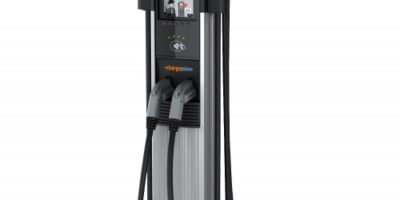Home EV Charging Safety Tips
As electric vehicles (EVs) become more popular, many are opting to charge their cars at home. Home charging stations offer convenience but come with safety considerations. Knowing these tips ensures that EV charging happens smoothly and safely.
Install a Dedicated Circuit
It’s critical to have a dedicated circuit for your EV charger. Standard household circuits may not handle the high power demand. Overloaded circuits can lead to electrical fires. Engage a licensed electrician to install a dedicated circuit to manage the load safely.

Use Proper Charging Equipment
Only use charging equipment approved by your EV manufacturer. Using generic or unapproved chargers can pose risks of malfunctions and safety hazards. Ensure that all components, including cords and connectors, meet the required standards.
Maintain the Charging Equipment
Regularly inspect your charging equipment for wear and damage. Physical damage such as frayed wires or cracked plugs should be addressed immediately. Clean the connectors and keep the charging area free of dirt and moisture.
Install a Ground Fault Circuit Interrupter (GFCI)
Installing a Ground Fault Circuit Interrupter (GFCI) provides additional safety. GFCI protects against electrical shock by breaking the circuit if an imbalance is detected. This is especially important if the charger is installed in a garage or outdoor setup.
Monitor Charging Sessions
Keep an eye on your EV while it charges. Although modern EVs and chargers have safety features, it’s wise to monitor charging sessions to detect any irregularities. Check for overheating, strange noises, or unusual smells.
Label Your Circuit Breaker
Clearly label the circuit breaker associated with your EV charger. In case of an emergency, you (or first responders) can quickly shut off power to the charger. This ensures no confusion and speeds up response time.
Ensure Proper Ventilation
If the charger is installed in a garage or enclosed space, ensure proper ventilation. Electric vehicles generate heat while charging. Without adequate airflow, this heat can lead to overheating risks. Adequate ventilation decreases fire risks and improves overall safety.
Avoid Extension Cords
Directly plug your EV charger into the dedicated outlet. Avoid using extension cords or power strips. These can overheat or fail to provide the necessary power, increasing the risk of fire and damage to the device.
Check Manufacturer’s Instructions
Always refer to the manufacturer’s instructions for installation and operation. Follow the guidelines closely to avoid voiding warranties and ensure safe operation. Pay attention to specifics, such as recommended wire gauges and installation tips.
Regularly Monitor Electrical System Health
Conduct periodic checks on your home’s electrical system. Older homes may have outdated wiring unable to handle sustained high electrical loads. Hire a professional to inspect your home’s wiring and upgrade if necessary to match modern requirements.
Stay Updated on EV and Charger Recalls
Stay informed about recalls related to your EV or the charger. Manufacturers issue recalls to address safety issues. Register your EV and charger with the manufacturer to receive timely updates on recalls and safety notices.
Use Surge Protectors
Consider using surge protectors for your EV charging system. Electricity surges can damage charging equipment and the vehicle’s battery. A surge protector guards against voltage spikes, adding an extra layer of protection.

Prioritize Cybersecurity
Modern EV chargers often connect to home networks for smart features. Secure your network to prevent unauthorized access. Use strong, unique passwords and update the charger’s firmware regularly to protect against vulnerabilities.
Turn Off Charger During Electrical Storms
Unplug your EV charger during electrical storms. Lightning strikes can cause power surges and damage the electrical systems. Minimize risks by not charging your vehicle during such conditions.
Emergency Protocols
Know the emergency protocols for your charger and vehicle. Have fire extinguishers rated for electrical fires readily available. Educate family members on how to respond should a charging emergency occur.
“`
Recommended EV Accessories
NOCO GENIUS10 Smart Charger – $79.95
Advanced battery maintainer and charger.
EV Charging Station Guide
Navigate the EV charging landscape.
As an Amazon Associate, we earn from qualifying purchases.




Subscribe for Updates
Get the latest articles delivered to your inbox.
We respect your privacy. Unsubscribe anytime.